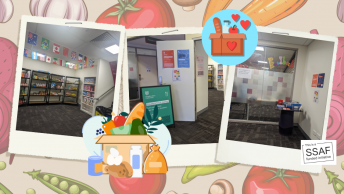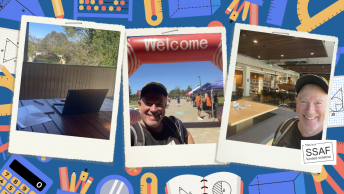This post is over three years old, the information may be outdated.
What feels like a lifetime ago, I completed a Bachelor of Arts at a bricks-and-mortar university in Western Sydney. It had been my lifelong dream to be a teacher but when I became a mother young, I put my career plans on hold, feeling overwhelmed every time I considered my return to study. After spending the last eight years raising my children, I decided it is now the right time for a new challenge and I have commenced a Master of Secondary Teaching at Charles Sturt via distance education.
I was apprehensive about returning to study. How would I find the time and motivation? What if I had forgotten how to write academically? I certainly couldn’t remember how to reference sources. Plus, learning to study online was a whole new ballgame compared to attending physical lectures and tutorials.

Charles Sturt provided several helpful Orientation sessions online which equipped me with the knowledge I required to tackle online learning. The sessions taught me how to navigate the various platforms, essay writing and referencing skills. Yet, after a few weeks of feeling like all my time had been swallowed up by readings and reflections and with my first major essay looming on the horizon, my confidence lagged. The excitement of returning to study had faded as doubts filled my head.
“Maybe I’m not ready for study.”
“Perhaps university isn’t the right place for a full-time mum like me.”
“Too much time has passed. My brain isn’t up to this anymore.”
“I can’t do this.”
At just the right time, some helpful coursework came my way. In a subject about Adolescent Development, I learned about the concepts of self-efficacy and growth mindset. Self-efficacy refers to the self confidence that individuals develop when they understand that they can overcome challenges and succeed by working hard and learning from their experiences. When people develop self-efficacy, they can draw inner strength from the knowledge of their past experiences to grant themselves the courage to persevere. They recognise that mistakes are opportunities for learning and growth.
The growth mindset concept elaborates on the self-efficacy understanding further. This view asserts the idea that a person’s capacity or abilities are not set in stone and can be changed with deliberate effort. People who say they cannot do something have a ‘fixed mindset’ which restricts their potential. Practicing a ‘growth mindset’ can involve acknowledging the limits of your capacity but understanding that those limits are not immovable. With practice, and in time, new skills can be acquired. Our brains are like muscles which can be strengthened through exercise. They can actually grow new connections when challenged, no matter our age.
Since learning about self-efficacy and growth mindset, when I am feeling challenged by the realities of balancing study on an already full plate, my inner dialogue is now more positive. I have shifted my thoughts to reflect this newfound confidence:
“Returning to study is difficult but I am ready for this.”
“My brain is growing through this new experience.”
“It’s ok to make mistakes, that’s how I learn to do better.”
“I have done this before, and I can do it again.”
Not only have I implemented these new ways of thinking into my studies, but they have also influenced the way that I am raising my kids. When my children complain about something being hard for them, I remind them that doing hard things and making mistakes are good for their growth, and while they might not have achieved their desired goal yet, if they keep trying, they will eventually succeed.

Not even a semester into my master’s degree, I have already learned something that will stay with me for life. I am looking forward to seeing what comes next.
Written by Hannah Tuton, studying a Master of Teaching (Secondary)










